Syntonics.
At Buck and Todd, we have taken the time to investigate the latest innovative interventions for visual health to provide unmatched care to our community. After meticulous research and consideration, we have incorporated Syntonics/ Light therapy into our Vision Therapy services to treat those with inefficient visual function. As we offer behavioural optometry services, we found this treatment use as an adjunctive to vision therapy would be beneficial for patients of all ages.

What is Syntonics/ Photo Therapy?
Syntonics is the application of selected light frequencies to the body’s central nervous system through the eyes to improve function. This technique has been developed in optics for over 70 years and has been proven to successfully treat visual function and physiological problems like Amblyopia (lazy eye), Strabismus (eye turn), convergence/ focusing issues, depth perception issues and brain injuries. Syntonics also benefits patients who suffer with chronic headaches, sleep disorders, pattern glare, visual attention deficits and emotional trauma.
In recent years, Syntonics has also assisted the improvement of academic results in patients with vision related learning disabilities, mental health issues and behavioural disorders. This has also extended to our older patients with improved productivity in the workplace, mood, ability to concentrate and a decrease in the effects of Visual Stress.
How does light achieve this?
The body’s autonomic nervous system is composed of opposing forces:
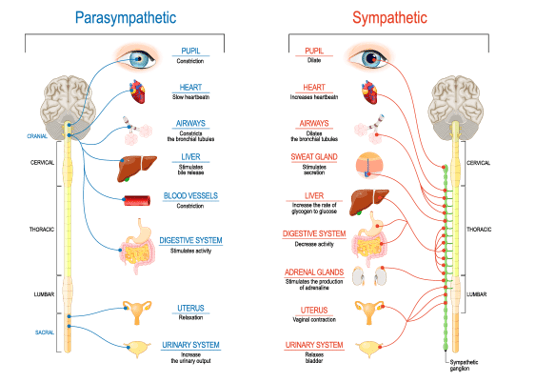
The body’s autonomic nervous system is composed of opposing forces:
- The sympathetic system (increases energy use / fight or flight), increasing heart rate, blood pressure and sweating.
- The parasympathetic system (conserves energy / rest and digest) which restores the body to a relaxed state through slow the heart rate, increasing salivation and digestion.
Light triggers the photoreceptors cells of the retina, generating an electrical signal which travels via the optic nerve and inferior accessory optic tract to stimulate regions of the brain, which in turn regulates the body.
Similarly, the endocrine system; pineal gland, hypothalamus, pituitary, thyroid, parathyroids, adrenals and gonads respond to chemicals in the blood and control mood, growth, metabolism, and reproduction.
Greater than 50% of the total volume of the blood passes through the retina every 10 minutes. Byproduct from photoreceptors travels through the endocrine system, stimulating the desired response dependent upon the specific wavelength of light stimulating the retina. The objective of syntonics is to help develop a state of homeostasis where the sympathetic and parasympathetic systems are in balance. As the equilibrium develops changes are measured by assessing the kinetic colour visual fields.
It is important to note not all patients will have the desired results with syntonics, especially if patients are unable to stay consist with the therapy.
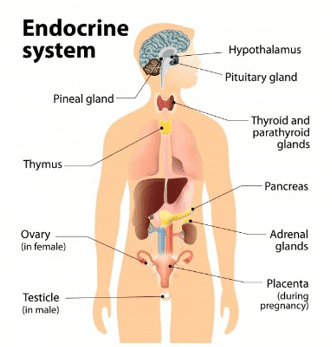
Research has shown certain frequencies of coloured light will stimulate different aspects of the nervous system. Higher energy/ short wavelength colours like blue or violet stimulate the parasympathetic nervous system. These colours can help to reduce adrenaline production, which helps with anxiety and stress. Lower energy/ longer wavelength colours like red and orange stimulate the sympathetic nervous system to improve fusion and binocularity. Wavelengths in the middle frequencies like green and yellow act as physiological stabilisers and detoxifiers for chronic or degenerative health issues.
What is a Syntonizer and how does it work?
Patients hire a Syntonizer from the practice which must be returned after treatment is complete. Usually, each home-based treatment session requires two coloured filters which are fitted into the syntonizer. The patient then looks through the syntonizer like a pair of binoculars at Colour # 1 for 5 to 10 minutes. After this, the filter is changed to Colour # 2 and the patient again looks at the light for 5 to 10 minutes. It is important that the colours are used in the order prescribed and the time spent looking at each colour is the same. As treatment progresses the time can be increased, if the patient is comfortable doing so. We suggest syntonics be completed in a darkened room, once a day, around the same time each day. Patients can repeat this process multiple times throughout the day, but it is important not to push yourself for results.
Our research has shown by using a Syntonizer with an enclosed tunnel, standardised light source, and chromatic filters we are able to create a consistently repeatable treatment regime. This provides our optometrist confidence the treatment will be accurate without any environmental interference. With the syntonizer we have freedom to customise the coloured filters required for each patient and have a more consistent and reliable light source than daylight.
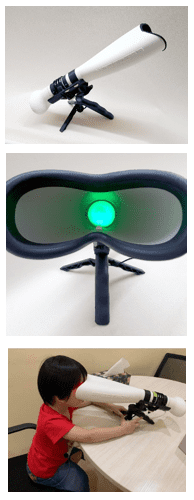
How does someone start treatment?
We recommend scheduling a consultation with our Optometrist Dr Ieuan Rees, who is a certified member with the College of Syntonic Optometry. This consultation will be to evaluate a patient’s vision and suitability for Syntonics. After a comprehensive binocular vision assessment, a secondary appointment with our Vision Therapy Assistant Ms Liz enables a baseline Kinetic Colour Visual Field and a Van Orden Star test to be established. Over time as the patient works through the treatment, we track progress by retesting the kinetic colour fields. As treatment progresses and equilibrium is developed the fields should widen.
What’s a Kinetic Colour Visual Field?
A colour kinetic visual fields helps to map the patient’s field of attention. By moving a coloured object in and out of the patient’s peripheral vision we can map where awareness of the colour of the object occurs in relation to their fixation point. Field results like these below, allow comparison between patient’s field of vision overlying the normal colour field.
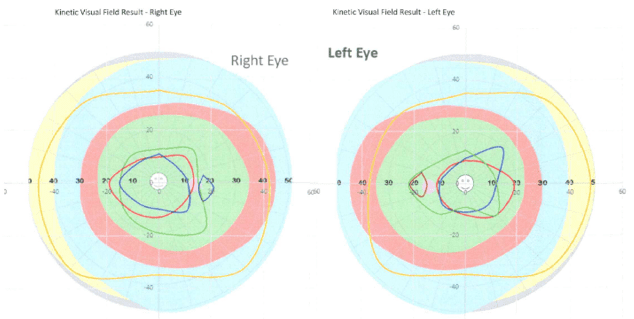
These results often reveal the location of the stressor within the body; lower back pain, upper and lower jaw issues, gall bladder, neck problems, lungs, adrenals and emotions. The visual system responds to these stressors by suppression or restriction of the field for a certain colour or part of the kinetic colour visual field. Syntonics does not treat the stressor, rather we seek to adjust the response of the central nervous system to allow awareness of the full visual field to return. Without these fields we cannot measure the efficacy of the syntonic treatment.
What’s a Van Orden Star?
A Van Orden Star test helps show the optometrist how a patient perceives the world around them. This is achieved by having the patient draw lines on a score card, with a pencil in each hand such that the lines come together where the pencils appear to touch. As the patient is looking through the scope, the optics and the septum of the scope enable only one side of the score card to be seen with the left eye and the other with the right eye. Ideally, when completed results should look like the lines on each side meet in a definite point at a distance. When there is no defined point, we can determine whether the patient is suppressing one eye over the other or vertical deviation is present.
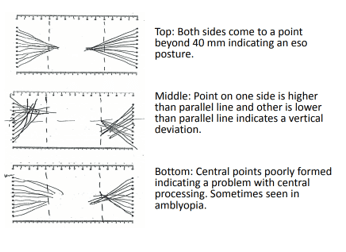
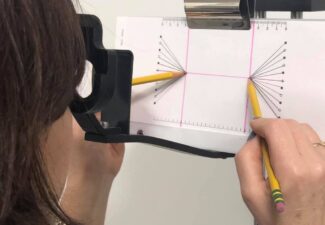
Once Kinetic Colour Visual Fields and Van Orden Stars are complete, Dr Ieuan will evaluate the results, combine these results with the binocular vision exam, and ask further questions relating to emotion. This allows Dr Ieuan is to determine what coloured filters are required. Unfortunately, syntonics is not a standardised intervention in optometry and there is limited information/ literature online for patients with questions or those wanting further information. Our clinical experience shows us syntonics helps open visual fields, reduce amblyopia, reduce the size of strabismus, improve concussion symptoms, and decrease the time required for vision therapy and improve the stability of the vision therapy outcomes. Please contact our staff if you want to know more or would like to book in for a consultation today.